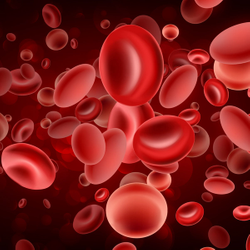Belantamab Mafodotin Combo Regimens Accepted for Review in Japan in R/R MM
A belantamab mafodotin combination regimen has been accepted for review in Japan, based on data from the DREAMM-7 and DREAMM-8 clinical trials.
Belantamab mafodotin was also granted orphan drug designation by the Japanese agency, which is reserved for medications addressing high unmet medical need and ensures priority NDA review.

Japan’s Ministry of Health, Labour and Welfare (MHLW) has accepted a new drug application (NDA) for review of belantamab mafodotin (Blenrep) in combination with bortezomib (Velcade) plus dexamethasone or pomalidomide (Pomalyst) plus dexamethasone as a treatment for patients with relapsed/refractory multiple myeloma, according to a press release from GSK, the developer of the agent.1
Belantamab mafodotin was also granted orphan drug designation by the Japanese agency, which is reserved for medications addressing high unmet medical need and ensures priority NDA review. The regulatory submission of these combination regimens is supported by data from the DREAMM-7 (NCT04246047) and DREAMM-8 (NCT04484623) clinical trials.
“Multiple myeloma presents a growing health concern in Japan, where the number of patients diagnosed with multiple myeloma per year has increased continuously over the last 5 decades,” Hesham Abdullah, senior vice president and global head of oncology research and development at GSK, stated in the press release.1 “This underscores the urgent need for more treatment options for patients in Japan, particularly those with progressing disease that has become resistant to the current standard of care.”
The phase 3 DREAMM-7 trial is an open-label, randomized trial that evaluated belantamab mafodotin, bortezomib, and dexamethasone (BVd) compared with daratumumab (Darzalex), bortezomib, and dexamethasone (DVd) in patients with multiple myeloma who progressed after at least 1 line of therapy. Progression-free survival (PFS) was the primary end point, and secondary end points included overall survival (OS), response duration, and minimal residual disease (MRD)—negative status.
Of the 494 patients on the study, 243 were assigned to BVd and 251 were assigned to DVd. The belantamab mafodotin combination yielded a 59% reduction in the risk of disease progression or death (HR, 0.41; 95% CI, 0.31-0.53, P = <.00001).2 The median PFS was 36.6 months (95% CI, 28.4-not reached) in the BVd arm and 13.4 months (95% CI, 11.1-17.5) in the DVd arm.
At 18 months, OS rates were 84% in the BVd arm and 73% in the DVd arm. BVd had a higher frequency of grade 3 or higher adverse events vs patients who received DVd at 95% vs 78%, respectively. Ocular events were much more common with BVd (79%) than DVd (29%). Following dose modifications, events of worsening visual acuity were mostly resolved.
The phase 3 DREAMM-8 trial evaluated belantamab mafodotin in combination with pomalidomide and dexamethasone in comparison with bortezomib and pomalidomide/dexamethasone in relapsed/refractory multiple myeloma in patients with multiple myeloma who had at least 1 prior line of therapy, including a lenalidomide-containing regimen, and documented disease progression during or after their most recent therapy. DREAMM-8 included patients who were more heavily pretreated than those in DREAMM-7. The primary end point was PFS, and secondary end points included OS and MRD negativity rate.
The belantamab mafodotin combination had a statistically significant improvement in PFS compared with the bortezomib combination (HR, 0.52; 95% CI, 0.37-0.73, P <.001).3 At the end of 1 year, 71% (95% CI, 63%-78%) of patients receiving the belantamab mafodotin combination group compared with 51% (95% CI, 42%-60%) of patients receiving the bortezomib combination were alive and hadn’t experienced disease progression. The belantamab mafodotin combination showed benefit across all prespecified subgroups, including patients with poor prognostic features.
“[Belantamab mafodotin] combinations show potential based on the results of the DREAMM-7 and DREAMM-8 trials to redefine the treatment of relapsed/refractory multiple myeloma,”1 added Abdullah. “We are committed to working with health authorities worldwide to advance [belantamab mafodotin] along regulatory pathways so we can bring these additional treatment options to patients as quickly as possible.”
References
- Blenrep (belantamab mafodotin) combinations in relapsed/refractory multiple myeloma accepted for regulatory review in Japan. News release. GSK. September 17, 2024. Accessed September 17, 2024. https://tinyurl.com/3wu4w368
- Belantamab mafodotin, bortezomib, and dexamethasone for multiple myeloma. N Engl J Med. 2024;391(5):393-407. doi:10.1056/NEJMoa2405090.
- Blenrep combination reduced the risk of disease progression or death by nearly 50% versus standard of care combination in relapsed/refractory multiple myeloma. News release. GSK. June 2, 2024. Accessed September 17, 2024. https://tinyurl.com/ycu8sk26
Navigating AE Management for Cellular Therapy Across Hematologic Cancers
A panel of clinical pharmacists discussed strategies for mitigating toxicities across different multiple myeloma, lymphoma, and leukemia populations.